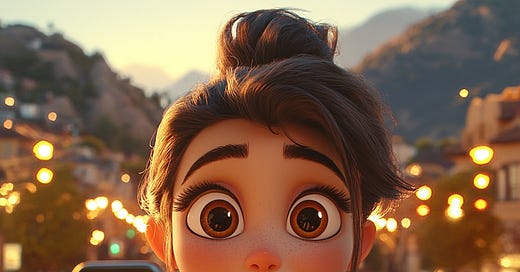Most marketers are focused on what AI can write.
But what it can see?
That’s where the next wave of marketing opportunity—and risk—is unfolding.
Last week, OpenAI quietly rolled out a new capability inside ChatGPT’s latest models (o3 + o4-mini):
Upload a photo—no GPS, no metadata—and ChatGPT can guess where it was taken.
Not just the city.
The exact coffee shop.
The specific restaurant.
Even if the photo is a little blurry.
It’s like GeoGuessr with a photographic memory and Sherlock Holmes-level deduction skills.
Cool? Yes.
Creepy? Also yes.
Useful for marketers? Absolutely—if used ethically.
How it works (quick breakdown)
Visual Clue Scanning: ChatGPT zooms in on street signs, logos, fonts, colors, even menus in the background.
Web Cross-Reference: It matches those visual elements against indexed data online—images, business listings, Google Maps photos, and more.
Precision: It doesn’t just guess the city—it can pinpoint the exact venue.
5 (Ethical) ways marketers can use AI photo location
1. Create hyper-localized content at scale
Upload customer photos and let AI identify where they were taken.
Use it to:
Personalize ad copy
Geo-target offers
Auto-generate Instagram captions with real-time relevance
🧠 Prompt idea:
“You’re a local content strategist. Use this photo to identify the location and write a caption that mentions a nearby landmark, making it feel like a real-time insider post.”
2. Smarter UGC sorting and curation
User-Generated Content is great—until you spend hours figuring out where each photo came from.
Let AI tag and sort based on location, even without metadata.
Build local galleries
Segment testimonials by city
Tailor content to region-specific audiences
3. Run geo-personalized ad campaigns
Upload example visuals and let AI match them to high-foot-traffic spots.
Then deploy outdoor campaigns, influencer pop-ups, or localized content with confidence.
Example: A CPG brand could launch a city-specific Instagram campaign using images taken by real users at coffee shops, parks, and gyms—and AI could help geo-map that content to optimize timing and targeting.
4. Event marketing recaps
No more guessing which photo was taken where during your event tour.
AI can:
Tag photos by venue
Generate geo-specific thank you posts
Personalize follow-up emails by event location
🧠 Prompt idea:
“You’re a brand event strategist. Here’s a folder of photos. Group them by location and write short captions for Instagram that shout out each city and venue.”
5. Map your brand footprint (or your competitor’s)
Where is your product actually showing up in the wild?
Upload social posts featuring your product
Let AI detect the city, store, or backdrop
Visualize where your brand’s influence is organically growing
Just don’t use this to track people.
Use it to identify opportunity.
Let’s talk privacy
This capability is powerful.
But it raises real questions:
What if someone uses it to find out where a stranger lives?
What if your team unknowingly uploads sensitive photos from an internal shoot?
What happens when people don’t know AI is capable of this?
You don’t need GPS data anymore to locate someone.
You just need an image.
Use this for personalization and customer experience.
Not for surveillance.
Final thought:
We’re entering an era where your content doesn’t just say something.
It reveals something.
Every photo. Every frame. Every visual asset your team shares can now be analyzed, tagged, and understood—by AI.
That can make your marketing smarter.
It can also make it riskier.
The new skill? Knowing the difference.





